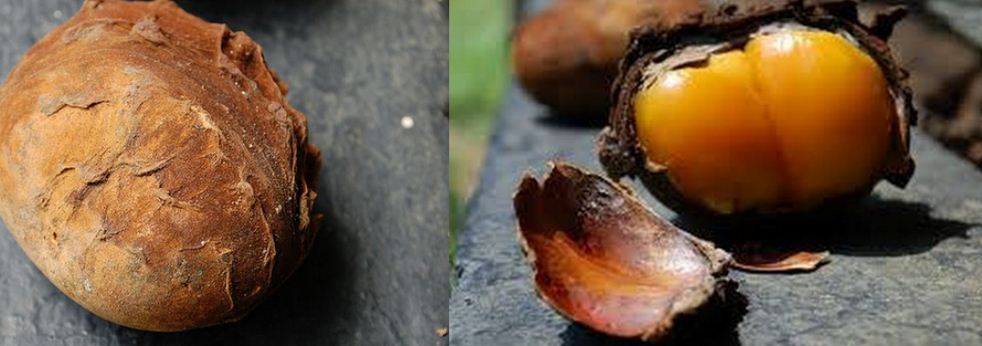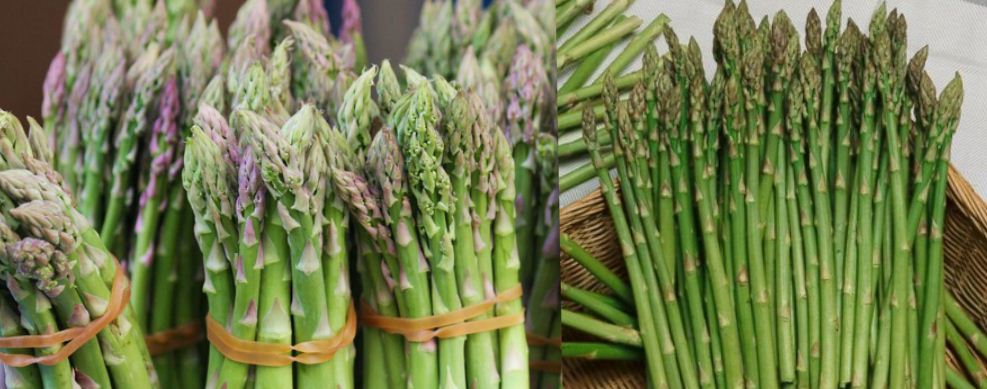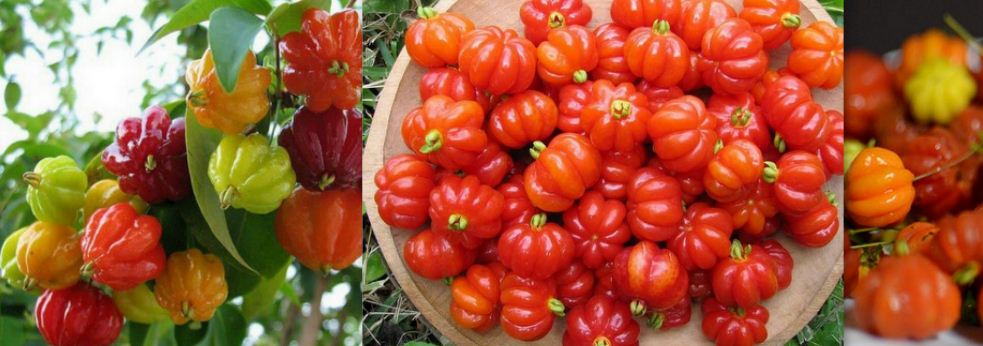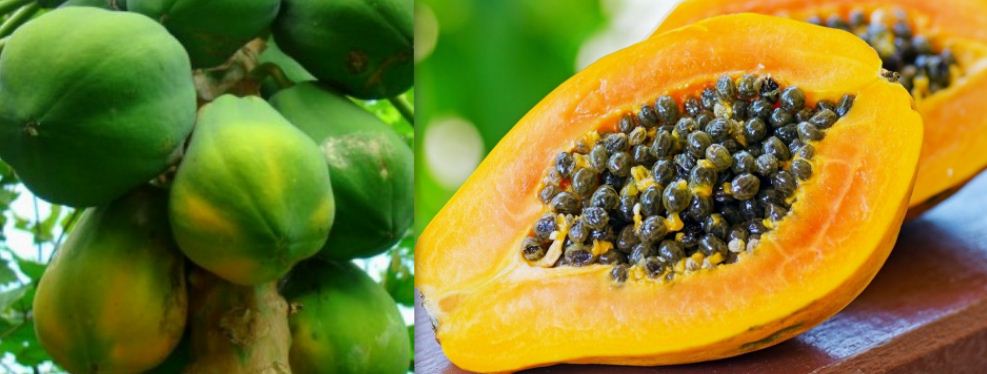About Health Benefits and Nutritional Value of Yellow Monkey Kola

Monkey Kola is a small, juicy fruit with a sweet, crunchy taste that people enjoy in many parts of West Africa. It is not just a tasty snack; it also offers health benefits. You can eat it fresh, add it to drinks, or use it in meals.
This article reviews information from trusted sources to highlight six Monkey Kola health benefits that research supports. It also provides simple ideas for including monkey kola in your daily life. Want to know how Monkey Kola can improve health? Let’s explore the details!
What Makes Monkey Kola Special
Monkey kola, also called yellow Monkey Kola or Cola pachycarpa, grows in humid forests and villages in southern Nigeria and other West African countries. It is known as Ochiricha or Achicha in Igbo, Ndiyah in Ibibio/Efik, and Obi Edun in Yoruba. The fruit has a bright yellow or white pulp and has been enjoyed for centuries for its flavor and nutrition.
One medium-sized Monkey Kola (about 50 grams) has only 30 calories but contains fiber, vitamin C, and plant substances called antioxidants. An original list mentioned 12 benefits, but this article focuses on six that studies confirm and are helpful for everyday health. Monkey Kola can support digestion, skin health, and more. Here are the six benefits and how they work.
6 Benefits of Monkey Kola for Health
1. Supports Digestion
Good digestion helps the body process food well, and monkey kola can assist. One fruit has about 2 grams of fiber, which helps food move through the intestines. Its high water content, around 85%, keeps things soft.
A 2017 Nutrients study shows that fiber prevents constipation and supports gut health. Monkey kola nutrition also includes natural sugars that provide energy without overloading the stomach. Eating monkey kola regularly can keep digestion smooth.
-
How It Works: Fiber adds bulk to stool, and water prevents dryness.
-
Ways to Use Monkey Kola: Eat a fresh monkey kola after a meal or add it to a monkey kola recipe salad with cucumber.
2. Improves Skin Health
Healthy skin looks and feels good, and monkey kola can improve it. The fruit contains vitamin C, which is about 10% of the daily need per fruit, which helps the body make collagen to keep skin strong.
As noted in a 2022 Journal of Cosmetic Dermatology study, monkey kola also contains beta-carotene, an antioxidant that protects skin cells. Its health benefits include supporting smooth and clear skin when eaten often.
-
How It Works: Vitamin C builds collagen, and beta-carotene fights cell damage.
-
Ways to Use Monkey Kola: Chew monkey kola as a snack or blend it into a monkey kola recipe juice with pineapple.
3. Helps Weight Management
Maintaining a healthy weight is easier with low-calorie foods, and monkey kola fits well. One fruit has only 30 calories and 2 grams of fiber, which helps you feel full longer. A 2021 Nutrients study found that fiber-rich fruits like monkey kola reduce hunger, supporting weight control. Monkey Kola Nutrition is an excellent choice for a balanced diet without adding extra calories.
-
How It Works: Fiber fills the stomach, and low calories prevent weight gain.
-
Ways to Use Monkey Kola: You can replace sugary snacks with monkey kola or add it to a monkey kola smoothie with banana.
4. Strengthening of Immunity
A strong immune system makes staying healthy simpler; monkey kola can help. Vitamin C accounts for 10% of daily needs and supports white blood cells that fight germs.
Antioxidants like flavonoids also protect cells, as shown in a 2019 Foods study. Including monkey kola health benefits in your diet can support the body’s ability to resist illness.
-
How It Works: Vitamin C boosts immune cells, and flavonoids shield the body.
-
Ways to Use Monkey Kola: Eat fresh monkey kola with nuts or mix it into a monkey kola recipe drink with lime.
5. Supports Heart Health
The heart keeps the body active, and monkey kola can support it. One fruit has small amounts of potassium, about 2% of daily needs, which helps maintain normal blood pressure.
The 2 grams of fiber lowers “bad” cholesterol (LDL) that can block blood vessels. A 2020 Journal of the American Heart Association study notes that fiber-rich fruits reduce heart disease risk. Monkey kola nutrition is a practical way to care for the heart.
-
How It Works: Potassium controls blood pressure, and fiber reduces cholesterol.
-
Ways to Use Monkey Kola: Add it to a fruit bowl or cook it in a monkey kola sauce for rice.
6. Enhances Eye Health
Clear vision is essential for daily tasks, and monkey kola can help. Its beta-carotene, a source of vitamin A, supports the retina for better sight, especially in low light. The National Institutes of Health confirms that vitamin A prevents eye problems. Monkey kola's health benefits include antioxidants that protect the eyes from damage, making it a good choice for vision care.
-
How It Works: Beta-carotene provides vitamin A, and antioxidants protect eye cells.
-
Ways to Use Monkey Kola: Snack on monkey kola alone or blend it into a monkey kola recipe juice with carrots.
What Is in Monkey Kola
Here is what one medium monkey kola (about 50 grams) contains:
-
Calories: 30—low and light.
-
Water: 85%—helps hydration.
-
Fiber: 2 grams—supports digestion and heart health.
-
Vitamin C: 10% of daily need—helps immunity and skin.
-
Potassium: 2% of daily need—supports the heart.
-
Beta-carotene: Provides vitamin A, which helps eyes and skin.
This information is based on USDA data and other studies. Monkey kola nutrition is simple but effective for health.
Antioxidants in Monkey Kola
Monkey kola contains antioxidants like beta-carotene, flavonoids, and vitamin C. These substances stop harmful particles called free radicals from damaging cells. This protection helps the body stay healthy and makes monkey kola nutrition stand out compared to other fruits.
How to Include Monkey Kola in Daily Life
Monkey kola is common in West African markets and sometimes dried or fresh in stores worldwide. It is easy to use in meals or snacks. Here are some ideas for enjoying monkey kola recipes throughout the day.
Morning Options
-
Quick Snack: Eat a fresh monkey kola for breakfast.
-
Fruit Drink: Blend monkey kola with water and a little orange juice for a monkey kola recipe drink.
-
Grain Mix: Add chopped monkey kola to porridge with honey.
Midday Options
-
Salad Idea: Mix monkey kola pieces with cucumber and a light dressing for a monkey kola recipe salad.
-
Soup Addition: Using a monkey kola recipe, cook monkey kola in a vegetable stew for lunch.
-
Snack Choice: Pair monkey kola with seeds like pumpkin seeds.
Evening Options
-
Dinner Side: Serve monkey kola with boiled yam for a monkey kola recipe meal.
-
Meal Base: Mix monkey kola into rice with spices.
-
Evening Snack: Chew monkey kola instead of dessert for a light monkey kola recipe treat.
Anytime Options
-
Small Snack: Eat monkey kola when hungry.
-
Cool Drink: Add monkey kola juice to cold water for a fresh taste.
-
Fruit Mix: Combine monkey kola with mango for a snack.
Note: Wash monkey kola well before eating to remove dirt. The seeds are not edible; they only eat the pulp. People with fruit allergies should talk to a doctor. Use in moderation to avoid stomach upset from too much fiber.
Why Choose Monkey Kola
Many people enjoy Monkey Kola for its taste and health effects. It grows in West Africa, is affordable, and can be used in many dishes. Six of its health benefits are smoother digestion, healthier skin, weight support, stronger immunity, better heart health, and clearer vision, which are proven by science and can help anyone.
With these how-to-eat Monkey Kola ideas, it's easy to try some daily and see a difference. Explore these monkey kola recipes and discover how they fit. It’s a simple way to add health with a sweet flavor!
History of Monkey Kola
Monkey kola has been eaten in West Africa for centuries and is often shared at gatherings to show friendship. Its name comes from its similarity to kola nuts and because monkeys love it. It remains a popular snack in villages and cities, valued for its taste and health effects.




